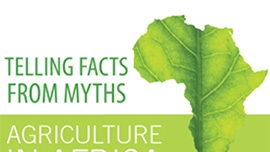SUMMARY
The issue:
Institutions facilitating efficiency-enhancing land transfers at low cost can increase the productivity of land use, help diversify the economy, and foster economic development. Yet, the general perception is that land markets are still largely absent in Africa, and that access to land is even more difficult for women.
The analysis:
This study uses data from the World Bank Living Standards Measurement Study– Integrated Surveys on Agriculture (LSMS–ISA) initiative implemented in six countries (Ethiopia, Malawi, Niger, Nigeria, Tanzania, and Uganda) to explore these issues. First, the data are used to describe whether and how rural households are participating in land markets and the characteristics of those households. Second, the study analyzes the determinants of land market participation by taking a multivariate econometric approach, the findings of which are interpreted within each country’s broader institutional context.
The results:
The descriptive findings reveal five key features of land markets in Africa today (figure):
- The amount of land used for crop cultivation by most households remains small (between 0.3 and 0.51 ha/adult), consistent with limited mechanization. The main exception is Niger, where land is less fertile and cultivation more extensive.
- Land rental market activity is not negligible (between 6 and 20 percent of households report to rent in land).
- Gender patterns in land access differ across countries. Female headed households are less likely to rent in land in Ethiopia, Malawi and Niger, but not in the other countries.
- Rental markets prove not dis-equalizing; in fact they are especially instrumental in helping smaller smallholder access land.
- Returns to family farm labor (per adult day) vary substantially across countries (number of adult family labor days in agriculture are not available in Ethiopia and Nigeria), but land markets are not found to affect productivity much so far.
The multivariate findings suggest that land market performance is lower where:
- implicit or explicit restrictions on land rental exist;
- perceived threats of uncompensated expropriation reduce subjective tenure security;
- where policies to document existing land rights exist but are not implemented or implemented in an ad hoc manner, or in a way that leaves out specific groups of land holders, in particular women.
POLICY IMPLICATIONS
Three policy issues emerge from this study:
- Legal framework. To support sustainable land management, investment in land improvements, and efficiency-enhancing transfers, property rights that effectively protect against the threat of land loss, and are transparent and known to the population, are essential. Low-cost models to secure these property rights in ways that can evolve over time are available and implemented in many countries.
- Women’s rights. Land and associated resources make up the lion’s share of most households’ wealth. Women’s use rights, control rights, and transfer rights to land will thus affect not only land use but also women’s ability to start independent nonfarm enterprises. More could be done to improve data for further policy research—such as adopting uniform recall periods and categories of shocks and coping mechanisms.
- Research agenda. Consistently implementing improvements in questionnaire design to obtain data on nonagricultural land, land acquisition history, individuals’ rights, land-attached investment, tenure and ownership status, prices, and output and input at the plot level can help in better harnessing this potential for analysis.

